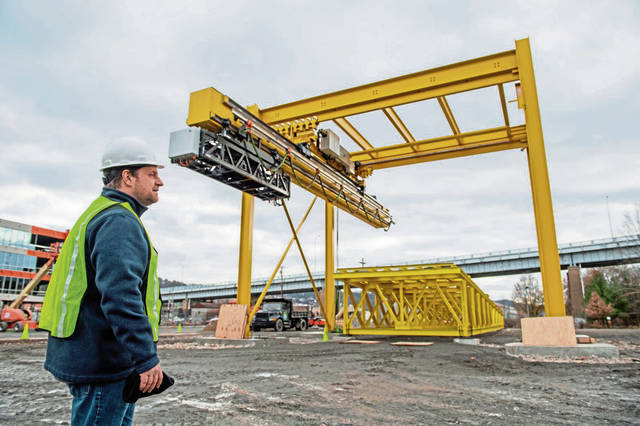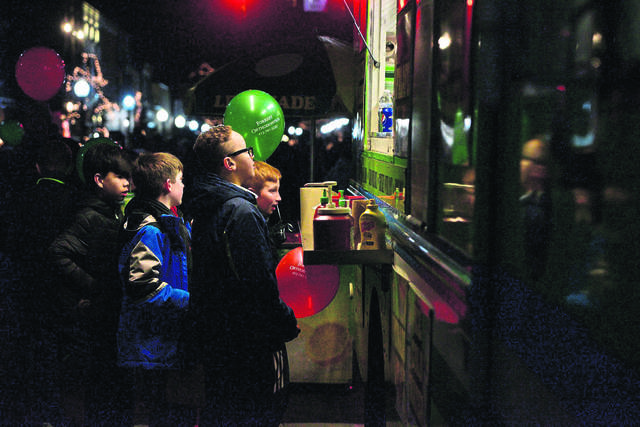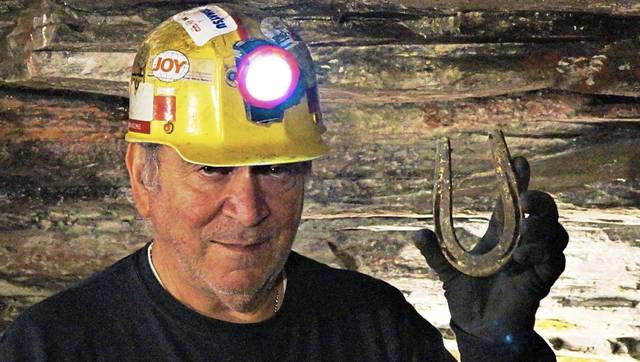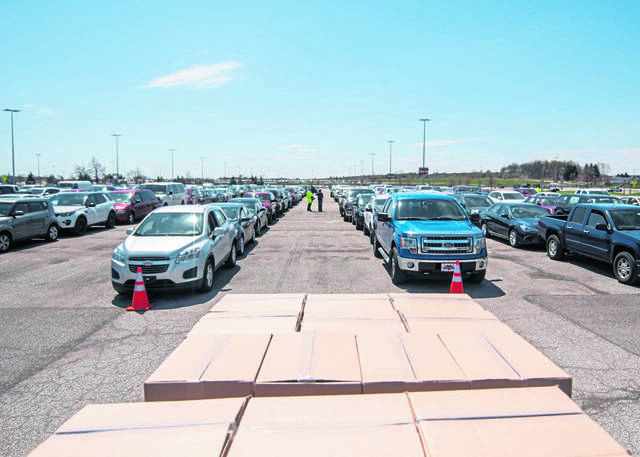A yellow steel structure has been looming 45 feet above Lawrenceville for about three months.
You can see it from the 40th Street Bridge and from Polish Hill.
Sometimes secretive about its projects, Carnegie Mellon University’s National Robotics Engineering Center isn’t exactly hiding its tallest robot.
The 45-foot robot has been visible since autumn on NREC’s grounds in Lawrenceville.
“I can see it from my bedroom window in Polish Hill,” said Gabriel Goldman, technical lead for the project.
The machine is a prototype for a larger floating robot the Army Corps of Engineers will call ARMOR 1. It will bind 3,600-pound concrete blocks into mats that will be sunk into the Mississippi River to shore up its banks.
The process, called mat sinking, has been used for 70 years, and it’s crucial in preventing erosion of the banks of the Mississippi.
The goal of the system is to increase the number and size of mats that can be assembled and launched each day while improving worker safety and reducing operating costs, according to an NREC news release.
The most visible part of the NREC robot is its 45-foot-tall support structure that will hold a 55-foot-long, 24-ton arm about 20 feet above the ground. A carriage suspended from the arm will have two hoists for lifting, transporting and positioning concrete blocks so they can be tied together with wire to create the mats, according to NREC.
“What people will see outside is very large, but it’s a small part of the overall robot system,” Goldman said.
In the ARMOR 1 system, robotics will be used to assemble the mats, pick them up and place them in the river, Goldman said, although humans will still be “in the loop.”
“Our main goal here is to make it a safer process,” Goldman said. “The goal here is not to minimize employees; the goal is to make it safe and productive.”
NREC began work on the project in 2017, program manager Jim Arthur said.
In its latest phase, researchers will use the newly built robot to test each part of the process. That includes automatically picking up, moving and positioning the concrete blocks, as well as detecting when blocks are broken or otherwise defective, NREC said. They also will test methods for automatically tying the mats together.
NREC will finish its work by spring 2020, and the full-scale system, expected to be deployed in 2021, will be built by another contractor.
Although it’s the largest project NREC has undertaken, the robot won’t be the world’s largest. Tradinno, a 51-foot, 6-inch fire-breathing dragon in Germany, is the world’s largest walking robot, according to world record standard-bearer Guinness. An autonomous ore train operated by Rio Tinto in Australia also claims to be the world’s largest robot.
Tom Davidson is a Tribune-Review staff writer. You can contact Tom at 724-487-7208, tdavidson@tribweb.com or via Twitter @TribDavidson.








